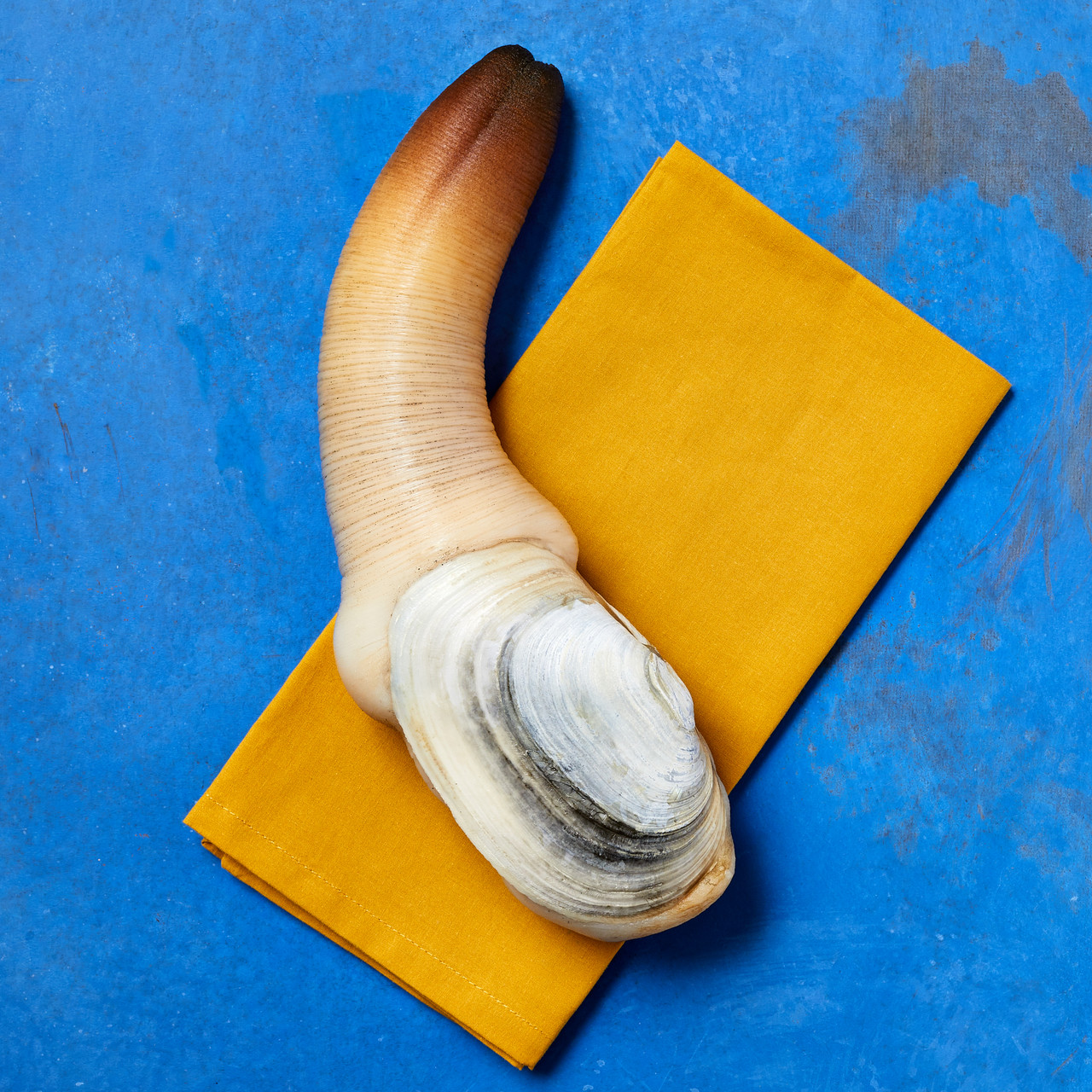
The pipe is covered with plastic netting or canopies to keep away birds, fish and other predators. The half dollar-sized clams are planted several inches deep and protected for the first year or two by a 6-inch (15.2cm) diameter PVC tube or mesh pipe inserted into the mud with several inches exposed. Thousands of tiny clams are placed in cages and lowered below the water’s surface where they will grow there for another year or so until it is time to be planted in the mudflats. Then it is off to a floating seed nursery in south Puget Sound.

Once fertilised, microscopic larvae are fed algae, which the company grows itself on site, for several weeks. Growing geoducks from seed to market takes five to seven years and plenty of gear.įor Taylor Shellfish, the country’s largest farmed shellfish producer, it begins at its hatchery on the Hood Canal where wild geoducks are coaxed into spawning eggs and sperm in a water tank. Raising these usual-looking clams is not for the impatient, however. NOAA is working with local and state agencies to make the shellfish permitting process more efficient without reducing the protections, she said. It’s lucrative,” said Ms Laura Hoberecht, an aquaculture coordinator with the National Oceanic and Atmospheric Administration (NOAA). “There are people interested in farming geoduck. Today, geoduck aquaculture represents one-tenth of the global geoduck market, and Washington claims 90 per cent of that share, according to Asst Prof Shamsak. Commercial geoduck farming followed in the mid-1990s, really taking off in the last decade with modernised growing techniques. The native geoduck, which comes from a Native American word meaning “dig deep”, has been dug recreationally in Northwest intertidal areas for decades, and it thrives in the inland waters of Washington, Alaska and British Columbia.īut commercial harvests of wild clams didn’t begin until 1970 in Washington, after divers discovered them aplenty in Puget Sound and lawmakers established a fishery. Several new farms have been permitted in recent years, despite challenges from opponents concerned about plastic pollution, aesthetics and potential environmental harm.Īnd now, backed by new research showing mostly short-lived, localised environmental effects, the state is preparing for the first time to lease 15 acres of public tidelands for geoduck aquaculture. An average clam weighs about two pounds and can fetch up to US$100 per pound overseas.ĭemand in Asia is prompting shellfish farmers to grow more of the clams along Washington’s private tidelands. That is double the volume and value exported in 2008. Last year, the US exported US$74 million (S$97.6 million), or about 4.99 million kg, worth of live wild and farmed geoduck, mostly to China and Hong Kong. She added: “They want to consume the higher-valued seafood items, and geoduck is one of them.”
GEO DUCK NEAR ME DRIVER
A big driver is the growing middle class in China,” said Gina Shamshak, an assistant economics professor at Goucher College, who has researched the geoduck market.

Within hours, the geoduck (pronounced gooey duck) is packed live on ice at nearby Taylor Shellfish Farms - on its way to be served raw as sashimi or added to hot-pot dishes to satisfy a growing appetite for the unique Pacific Northwest delicacy. King dodges the spray, already using a water hose to loosen sand and harvest the next one. The mollusk squirts water from its long obscene-looking neck. HARSTINE ISLAND (Washington) - Mr John King plunges his arm up to his shoulder into the mudflats of Puget Sound, roots around and soon pulls from the muck the world’s largest burrowing clam.


 0 kommentar(er)
0 kommentar(er)
